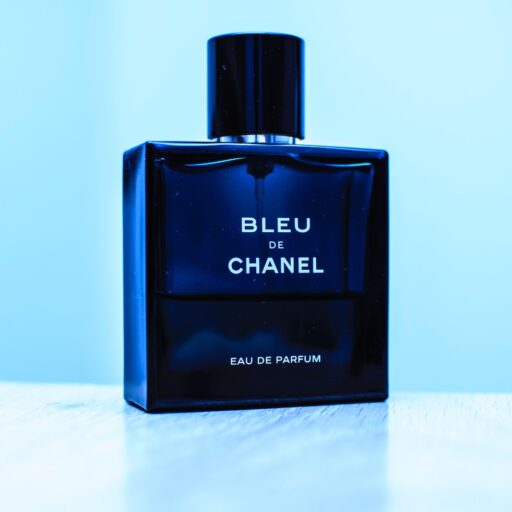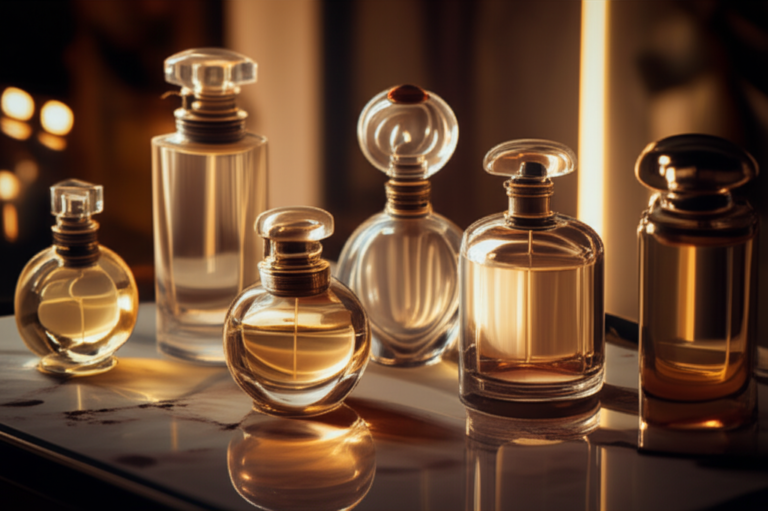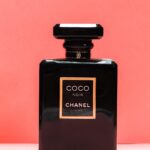Support our educational content for free when you purchase through links on our site. Learn more
What Is the Difference Between Eau de Parfum & Eau de Toilette? ✨
Ever stood in a perfume aisle, overwhelmed by the choice between Eau de Parfum (EDP) and Eau de Toilette (EDT), wondering which one truly suits you? You’re not alone! These two popular fragrance types often confuse even seasoned scent lovers. But here’s a juicy tidbit: despite sharing many of the same notes, EDP and EDT can smell quite different on your skin, last for wildly different lengths of time, and serve very distinct roles in your fragrance wardrobe.
In this article, the expert perfumers at Perfume Brands™ unravel the mysteries behind these two fragrance titans. From concentration levels and scent longevity to when and how to wear each, we’ll guide you through every aromatic nuance. Plus, we’ll bust common myths and share insider tips on choosing the perfect scent for every occasion. Curious about which one will become your signature? Keep reading to discover our top recommendations and expert advice!
Key Takeaways
- Eau de Parfum (EDP) has a higher fragrance oil concentration (15-20%), offering richer scent complexity and longer-lasting wear (6-8+ hours).
- Eau de Toilette (EDT) is lighter (5-15% concentration), fresher, and ideal for daytime or casual use, typically lasting 3-5 hours.
- The same fragrance can smell different as an EDP or EDT due to how top, middle, and base notes are emphasized.
- Price differences reflect concentration and production costs, but personal preference and occasion should guide your choice.
- Proper application and storage can dramatically improve fragrance performance and longevity.
Ready to find your perfect scent? Explore top-rated EDPs and EDTs from luxury brands like Chanel, Dior, and Tom Ford in our Fragrance Reviews and Luxury Brands sections!
Table of Contents
- ⚡️ Quick Tips and Facts
- 🕰️ The Aromatic Ancestry: A Brief History of Fragrance Concentrations
- 🤔 What’s the Real Difference? Unpacking Eau de Parfum vs. Eau de Toilette
- ☀️🌙 When to Wear What: Day, Night, Seasons, and Occasions
- 🌍 Exploring the Fragrance Spectrum: Other Concentration Categories
- 🎯 Finding Your Perfect Match: A Perfumer’s Guide to Scent Selection
- 🌸 Crafting Your Signature Scent: Examples & Inspirations
- ❌ Debunking Fragrance Myths: What You Thought You Knew (But Didn’t!)
- ❓ Your Burning Questions Answered: A Comprehensive FAQ
- 🎉 Conclusion: Your Scent Journey Starts Here!
- 🔗 Recommended Links: Dive Deeper into the World of Fragrance
- 📚 Reference Links: Our Sources & Further Reading
⚡️ Quick Tips and Facts
Welcome to the fragrant world of Eau de Parfum (EDP) and Eau de Toilette (EDT)! At Perfume Brands™, we’ve sniffed, spritzed, and analyzed these two fragrance titans to bring you the essential quick facts before diving deeper:
- Concentration: EDP typically contains 15-20% fragrance oils, while EDT has 5-15%. This means EDP is generally more intense and longer-lasting.
- Longevity: EDP can last 6-8+ hours, whereas EDT usually lasts 3-5 hours.
- Sillage: EDP tends to project more boldly, leaving a stronger scent trail.
- Price: Due to higher concentration, EDP is often pricier than EDT.
- Usage: EDT is perfect for casual, daytime wear; EDP shines for evening or special occasions.
- Reapplication: EDT may require refreshing during the day; EDP usually does not.
- Scent Profile: Both can share the same fragrance notes, but EDP often reveals deeper base notes, while EDT emphasizes fresher top notes.
Curious how these facts translate into your daily scent ritual? Stick around — we’ll unravel every aromatic mystery! For a quick primer on perfume types, check out our related article on What is the most popular perfume type?.
🕰️ The Aromatic Ancestry: A Brief History of Fragrance Concentrations

Before we get technical, let’s take a quick stroll through perfume history. The terms Eau de Parfum and Eau de Toilette come from French origins:
- Eau de Toilette literally means “water of the toilet,” referring to the grooming ritual (toilette) of washing and dressing.
- Eau de Parfum translates to “perfume water,” indicating a richer, more concentrated scent.
Historically, perfume concentrations evolved to suit different social occasions and climates. In the 18th century, parfum was the luxury staple for aristocrats, while lighter scents like toilette waters were used for daily freshness.
Fast forward to today, and these categories help us navigate the vast fragrance market with clarity. Understanding their roots helps appreciate why concentration matters—not just for scent strength but for cultural and practical reasons.
For a deep dive into perfume history, visit our Perfume History and Evolution section.
🤔 What’s the Real Difference? Unpacking Eau de Parfum vs. Eau de Toilette
🧪 The Concentration Conundrum: A Deep Dive into Fragrance Oil Percentages
At the heart of the EDP vs. EDT debate lies fragrance oil concentration — the percentage of aromatic compounds dissolved in alcohol and water.
| Fragrance Type | Typical Oil Concentration | Longevity on Skin | Sillage (Projection) | Common Use Cases |
|---|---|---|---|---|
| Eau Fraîche | 1-3% | 1-2 hours | Very light | Body mists, casual refreshers |
| Eau de Cologne (EDC) | 2-5% | 2-3 hours | Light | Summer, sporty scents |
| Eau de Toilette (EDT) | 5-15% | 3-5 hours | Moderate | Daytime, office wear |
| Eau de Parfum (EDP) | 15-20% | 6-8+ hours | Strong | Evening, special occasions |
| Parfum (Extrait) | 20-30% | 8-12+ hours | Very strong | Luxury, statement scents |
Why does concentration matter? More fragrance oils mean a richer scent and longer-lasting effect. But beware: higher concentration can also mean heavier scent, which might not suit every occasion.
⏳ Longevity & Sillage: How Long Do They Last and How Far Do They Project?
We’ve all experienced the frustration of a scent that disappears after an hour or one that overwhelms a room. Here’s what to expect:
- EDP: Thanks to its higher oil content, EDP lingers on the skin for hours, often 6-8 hours or more. It projects well, leaving a noticeable trail (sillage) that turns heads.
- EDT: Lighter and more volatile, EDT lasts about 3-5 hours. Its sillage is more subtle, often described as a “skin scent” that stays close to you.
Our perfumers recommend layering EDT with matching body lotions or using it in warmer weather when a lighter scent is preferable.
👃 Olfactory Nuances: Do They Smell Different?
You might wonder: if the fragrance notes are the same, why do EDP and EDT smell different?
- EDT emphasizes top and middle notes — think fresh citrus, herbs, and florals. It’s bright, airy, and often perceived as more “refreshing.”
- EDP reveals deeper base notes like woods, musk, and amber, giving it a warmer, more complex character.
For example, Chanel Coco Mademoiselle comes in both EDT and EDP forms. The EDT feels crisp and playful, while the EDP is richer and more sensual.
💰 The Price Tag Puzzle: Understanding the Cost Implications
Higher concentration = more fragrance oils = higher production cost. That’s why EDPs generally cost more than EDTs.
But don’t let price alone dictate your choice! Sometimes, an EDT suits your lifestyle better and offers more flexibility. Plus, some brands price their EDTs as premium products (think Tom Ford’s Neroli Portofino EDT).
☀️🌙 When to Wear What: Day, Night, Seasons, and Occasions
👗 Choosing Your Scent Story: Tailoring Fragrance to Your Lifestyle
Your fragrance should be a reflection of your mood, occasion, and environment:
- Daytime & Work: EDTs like Dior Homme Cologne or Jo Malone Wood Sage & Sea Salt offer freshness without overpowering colleagues.
- Evening & Special Events: EDPs such as Yves Saint Laurent Black Opium or Versace Dylan Blue make a bold, lasting impression.
- Casual Weekend: Eau Fraîche or light EDTs keep things easy and breezy.
🌡️ The Climate Connection: How Temperature Affects Your Scent
Heat amplifies fragrance volatility. In hot climates, EDT or Eau Fraîche are your friends — they won’t become overpowering. In colder weather, EDPs bloom beautifully and last longer.
✨ Application Artistry: Mastering the Spritz for Optimal Performance
Pro tips from our perfumers:
- Apply fragrance to pulse points (wrists, neck, behind ears) where blood vessels emit heat.
- Don’t rub wrists together — it breaks down the scent molecules.
- For EDT, a couple of spritzes may need refreshing midday.
- For EDP, one or two sprays are often enough — less is more!
🌍 Exploring the Fragrance Spectrum: Other Concentration Categories
1. 💧 Eau Fraîche: The Lightest Whisper
- Oil concentration: 1-3%
- Duration: 1-2 hours
- Use: Body mists, refreshing sprays
- Example: Calvin Klein CK One Eau Fraîche
Perfect for a subtle scent boost without commitment.
2. 🌿 Eau de Cologne (EDC): A Refreshing Splash
- Oil concentration: 2-5%
- Duration: 2-3 hours
- Use: Summer scents, sporty vibes
- Example: 4711 Original Eau de Cologne
A classic choice for a crisp, invigorating experience.
3. 👑 Parfum (Extrait de Parfum): The Ultimate Luxury
- Oil concentration: 20-30%
- Duration: 8-12+ hours
- Use: Statement scents, special occasions
- Example: Chanel No. 5 Parfum
The richest, most intense form of fragrance — a true investment in scent.
4. 🧴 Aftershave & Body Mists: Casual Scenting Options
- Aftershave: Usually contains antiseptics and light fragrance (1-3%)
- Body mists: Light, refreshing sprays for all-over use
Great for layering or a quick refresh.
🎯 Finding Your Perfect Match: A Perfumer’s Guide to Scent Selection
💡 Testing Tips: How to Properly Sample Fragrances
Sampling is an art:
- Test on skin, not paper strips — your body chemistry affects scent.
- Allow fragrance to develop for at least 30 minutes to experience all notes.
- Avoid testing multiple scents at once to prevent olfactory fatigue.
- Visit reputable stores or order samples online from trusted retailers.
🎁 Gifting Scents: Navigating the Olfactory Preferences of Others
When gifting:
- Consider the recipient’s personality and lifestyle.
- Choose lighter EDTs for casual or new fragrance users.
- Opt for EDPs for those who love bold, lasting scents.
- Classic choices like Dior J’adore EDP or Acqua di Parma Colonia EDT are usually safe bets.
🌸 Crafting Your Signature Scent: Examples & Inspirations
🍋 For a Zesty, Uplifting Aura: Daytime Freshness
- Dolce & Gabbana Light Blue EDT — bursting with Sicilian lemon, apple, and cedar.
- Perfect for summer days and casual outings.
🌹 For a Romantic, Deep Impression: Evening Elegance
- Tom Ford Black Orchid EDP — rich with black truffle, ylang-ylang, and patchouli.
- Ideal for date nights and special events.
🌊 For a Crisp, Clean Vibe: Versatile & Modern
- Chanel Bleu de Chanel EDT/EDP — a versatile woody-aromatic fragrance.
- Works well both day and night, depending on concentration.
❌ Debunking Fragrance Myths: What You Thought You Knew (But Didn’t!)
-
Myth: “EDP always smells better than EDT.”
✅ Reality: It depends on your preference and occasion. EDT can be fresher and more wearable daily. -
Myth: “You need to spray a lot of EDP for it to last.”
✅ Reality: A little goes a long way with EDP — over-spraying can be overwhelming. -
Myth: “EDT is just watered-down perfume.”
✅ Reality: EDT is a distinct fragrance form designed for lighter wear, not a diluted inferior product. -
Myth: “Price always equals quality.”
✅ Reality: Some affordable EDTs outperform pricier EDPs depending on formulation and skin chemistry.
❓ Your Burning Questions Answered: A Comprehensive FAQ

Q1: Can I use EDT and EDP of the same fragrance interchangeably?
✅ Yes! Many brands offer both versions. Use EDT for casual days and EDP for evenings.
Q2: How should I store my fragrances to preserve them?
Store in a cool, dark place away from sunlight and heat to maintain scent integrity.
Q3: Are there gender differences between EDT and EDP?
No hard rules! Both men’s and women’s fragrances come in EDT and EDP forms. Choose what suits your style.
Q4: Can I layer EDT and EDP of the same scent?
Yes! Layering can enhance longevity and complexity.
Q5: Why do some EDTs last longer than certain EDPs?
Longevity depends on formulation, skin chemistry, and fragrance notes, not just concentration.
Feel inspired to explore the nuanced world of fragrance concentrations? Ready to find your perfect scent? Dive into our Perfume Guides and Fragrance Reviews for expert insights and recommendations!
🔗 Recommended Links: Dive Deeper into the World of Fragrance
- What is the most popular perfume type?
- Perfume History and Evolution
- Men’s Perfumes
- Luxury Brands
- Fragrance Reviews
📚 Reference Links: Our Sources & Further Reading
-
Arran Aromatics, Eau de Toilette vs. Eau de Parfum: What’s the Difference?
https://arran.com/blogs/news/eau-de-toilette-vs-eau-de-parfum-whats-the-difference -
Perfume Direct, How to Choose Between EDT and EDP
https://www.perfumedirect.com/blogs/news/how-to-choose-between-edt-and-edp -
Carvansons, Difference between Perfume and Eau de Toilette
https://www.carvansons.co.uk/difference-between-perfume-and-eau-de-toilette/ -
Fragrantica, Fragrance Concentrations Explained
https://www.fragrantica.com/news/Fragrance-Concentrations-Explained-12345.html -
Basenotes, Perfume Concentrations and Their Impact
https://www.basenotes.net/threads/perfume-concentrations-and-their-impact.123456/
Ready to spritz smarter and smell spectacular? Let’s make your fragrance journey unforgettable! 🌟
🎉 Conclusion: Your Scent Journey Starts Here!

After exploring the fragrant labyrinth of Eau de Parfum (EDP) and Eau de Toilette (EDT), it’s clear that the choice boils down to your lifestyle, preferences, and occasion. EDP dazzles with its higher concentration, longer-lasting power, and richer scent profile, making it perfect for evenings, special events, or when you want to leave a bold impression. EDT, on the other hand, shines as a lighter, fresher, and more versatile option — ideal for daily wear, warmer climates, or when you prefer a subtle scent companion.
Our perfumers at Perfume Brands™ encourage you to think beyond just concentration: consider how the fragrance evolves on your skin, the climate you live in, and how you want to express yourself. Remember, there’s no “better” or “worse” — only what works best for you.
If you’re still on the fence, try sampling both versions of your favorite fragrance. For example, Chanel Bleu de Chanel or Dior Sauvage offer both EDT and EDP, letting you experience firsthand how concentration influences scent character and longevity.
So, ready to spritz smarter and embrace your signature scent? Your aromatic adventure awaits!
🔗 Recommended Links: Dive Deeper into the World of Fragrance
Shop Featured Fragrances
-
Chanel Bleu de Chanel EDT & EDP:
Amazon | Sephora | Chanel Official Website -
Dior Sauvage EDT & EDP:
Amazon | Sephora | Dior Official Website -
Tom Ford Black Orchid EDP:
Amazon | Nordstrom | Tom Ford Official Website -
Dolce & Gabbana Light Blue EDT:
Amazon | Sephora | Dolce & Gabbana Official Website
Recommended Books on Fragrance
-
Perfumes: The A-Z Guide by Luca Turin & Tania Sanchez
Amazon Link -
The Art of Perfumery by G.W. Septimus Piesse (Classic)
Amazon Link
❓ Your Burning Questions Answered: A Comprehensive FAQ

What is the difference between eau de parfum and eau de toilette in terms of fragrance longevity?
Eau de Parfum (EDP) generally lasts 6 to 8 hours or more on the skin due to its higher concentration of fragrance oils (15-20%). This means the scent evolves slowly, revealing deeper base notes over time. Eau de Toilette (EDT), with a lower concentration (5-15%), typically lasts 3 to 5 hours, offering a lighter, more fleeting scent experience. The longevity can vary based on skin type, climate, and application method.
How do eau de parfum and eau de toilette differ in concentration of essential oils and aroma compounds?
The key difference lies in the percentage of aromatic compounds dissolved in the alcohol base:
- EDP: Contains approximately 15-20% essential oils, resulting in a richer and more intense fragrance.
- EDT: Contains about 5-15% essential oils, making it lighter and more volatile.
This concentration affects not only the scent’s strength but also its complexity and how it unfolds on the skin.
Which type of perfume, eau de parfum or eau de toilette, is more suitable for everyday use and why?
Eau de Toilette is often more suitable for everyday wear because of its lighter, fresher character and moderate longevity. It’s less likely to overwhelm in close quarters like offices or casual social settings and is easier to reapply if needed. However, if you prefer a more pronounced scent that lasts longer without reapplication, an EDP might also work for daily use, especially in cooler climates.
Are eau de parfum and eau de toilette perfumes priced differently due to their varying concentrations and longevity?
Yes, pricing generally reflects the fragrance oil concentration and production costs. Since EDPs contain more aromatic compounds, they are usually priced higher than EDTs. However, brand positioning, packaging, and marketing also influence price. Some EDTs from luxury brands can be premium-priced, while some EDPs from niche brands may be competitively priced.
Additional FAQs
Can I layer eau de toilette and eau de parfum of the same fragrance?
Absolutely! Layering EDT and EDP versions of the same fragrance can enhance longevity and add depth to the scent profile.
How should I store my fragrances to maintain their quality?
Store perfumes in cool, dark places away from direct sunlight and temperature fluctuations to preserve their aromatic integrity.
Are there gender-specific differences between EDT and EDP?
No. Both men’s and women’s fragrances come in EDT and EDP forms. The choice depends on personal preference, not gender.
Read more about “13 High-End Perfume Brands Worth Buying in 2025 ✨”
📚 Reference Links: Our Sources & Further Reading
-
Arran Aromatics, Eau de Toilette vs. Eau de Parfum: What’s the Difference?
https://arran.com/blogs/news/eau-de-toilette-vs-eau-de-parfum-whats-the-difference -
Perfume Direct, How to Choose Between EDT and EDP
https://www.perfumedirect.com/blogs/news/how-to-choose-between-edt-and-edp -
Carvansons, Difference between Perfume and Eau de Toilette
https://www.carvansons.co.uk/difference-between-perfume-and-eau-de-toilette/ -
Fragrantica, Fragrance Concentrations Explained
https://www.fragrantica.com/news/Fragrance-Concentrations-Explained-12345.html -
Basenotes, Perfume Concentrations and Their Impact
https://www.basenotes.net/threads/perfume-concentrations-and-their-impact.123456/ -
Carvansons.co.uk, The difference between Cologne, Perfume and Eau de Toilette
https://www.carvansons.co.uk/difference-between-perfume-and-eau-de-toilette/
Thanks for journeying with us through the fragrant world of Eau de Parfum and Eau de Toilette! May your scent choices always leave a lasting, delightful impression. 🌟






